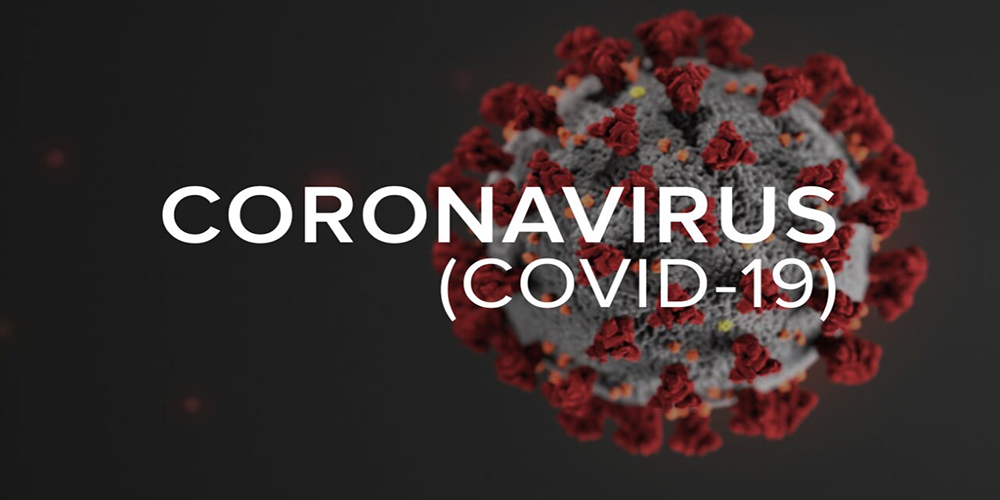
COVID-19 - Coronavirus Disease 2019
Mar 27, 2020
COVID-19
Coronavirus disease 2019 (COVID-19) is a respiratory illness that can spread from person to person. It is officially called SARS-CoV-2, which stands for severe acute respiratory syndrome coronavirus 2. The disease was first identified in 2019 in Wuhan, the capital of Hubei, China, and has since spread globally, resulting in the 2019–20 coronavirus pandemic.
How it spreads
The virus is typically spread during close contact and via respiratory droplets produced when people cough or sneeze.Respiratory droplets may be produced during breathing but it is not considered airborne.
It may also spread via fomite transmission. Touching a fomite (contaminated surface) and then touching body parts, such as the nose, mouth, or eyes, could potentially introduce the pathogen into the body.
It is most contagious when people are symptomatic, Some spread might be possible before people show symptoms; there have been reports of this occurring with this new coronavirus, but this is not thought to be the main way the virus spreads. The virus can live on surfaces for up to 72 hours.
Symptoms
Common symptoms include fever, cough, and shortness of breath. Other symptoms may include muscle pain, sputum production, diarrhea, sore throat, and loss of smell and taste. Symptoms may appear 2-14 days after exposure.Prevention
Preventive measures to reduce the chances of infection include:
Washing hands with soap and warm water often and for at least 20 seconds especially after you have been in a public place, or after blowing your nose, coughing, or sneezing. If soap and water are not readily available, use a hand sanitizer that contains at least 60% alcohol. Cover all surfaces of your hands and rub them together until they feel dry.
Practicing good respiratory hygiene and avoiding touching the eyes, nose, or mouth with unwashed hands.
Cover the mouth and nose with a tissue when coughing or sneezing and use the inside of the elbow if no tissue is available. Immediately wash your hands with soap and water for at least 20 seconds. If soap and water are not readily available, clean your hands with a hand sanitizer that contains at least 60% alcohol.
Staying at home, avoid crowded places. Social distancing strategies aim to reduce contact of infected persons with large groups by closing schools and workplaces, restricting travel, and canceling mass gatherings. Social distancing also includes that people stay at least 6 feet apart (about 1.80 meters).
If you are sick, you should wear a facemask when you are around other people (e.g., sharing a room or vehicle) and before you enter a healthcare provider’s office. If you are not able to wear a facemask (for example, because it causes trouble breathing), then you should do your best to cover your coughs and sneezes, and people who are caring for you should wear a facemask if they enter your room.
If you are NOT sick, you do not need to wear a facemask unless you are caring for someone who is sick (and they are not able to wear a facemask). Facemasks may be in short supply and they should be saved for caregivers.
Clean and disinfect frequently touched surfaces daily. This includes tables, doorknobs, light switches, countertops, handles, desks, phones, keyboards, toilets, faucets, and sinks. If surfaces are dirty, clean them: Use detergent or soap and water prior to disinfection.
Recent Posts
2025 WASSCE Challenge Round 8 Performance Statistics
Apr 19, 2025
2025 UTME Challenge Round 12 Performance Statistics
Apr 19, 2025
2025 BECE Challenge Round 7 Performance Statistics
Apr 12, 2025
2025 WASSCE Challenge Round 7 Performance Statistics
Apr 12, 2025
2025 UTME Challenge Round 11 Performance Statistics
Apr 12, 2025
2025 BECE Challenge Round 6 Performance Statistics
Apr 05, 2025
2025 WASSCE Challenge Round 6 Performance Statistics
Apr 05, 2025
2025 Common Entrance Challenge Round 6 Performance Statistics
Apr 05, 2025
2025 UTME Challenge Round 10 Performance Statistics
Apr 05, 2025
2025 BECE Challenge Round 5 Performance Statistics
Mar 29, 2025